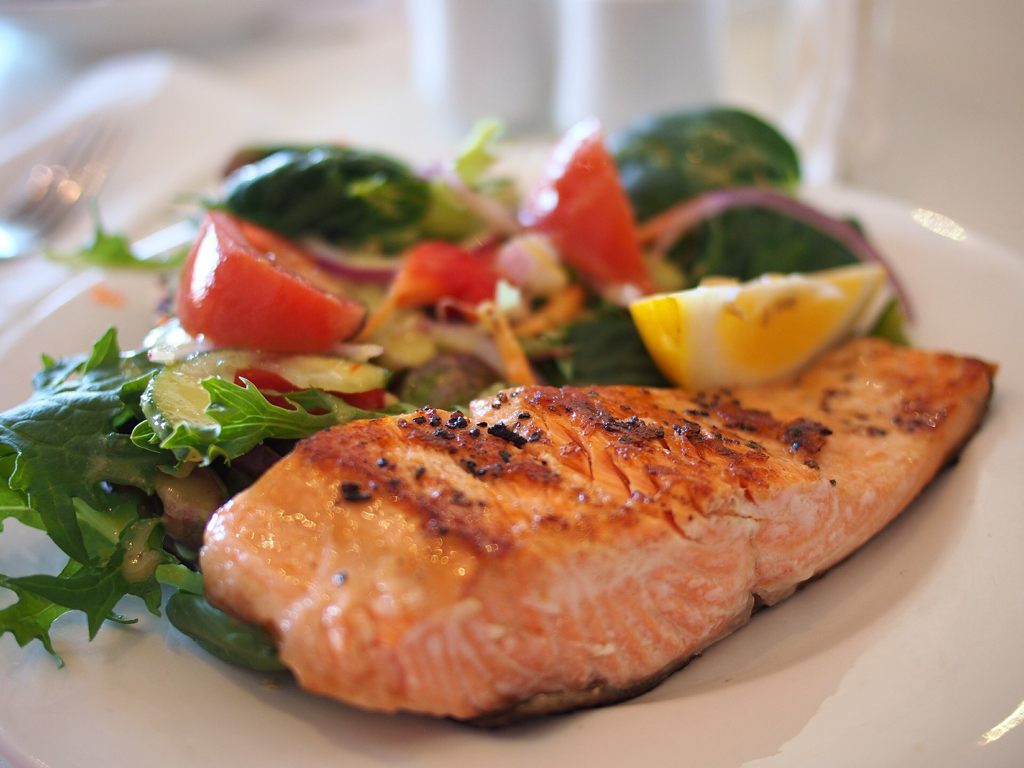|
Remedial massage and myotherapy treatments are fantastic for releasing muscle tension and loosening up the tight spots. But unless you’re in the clinic a few times a week, there’s a good chance you’re still dealing with tight muscles in your daily life. There are heaps of contributing factors to tight muscles. How you move, how you sleep and how you spend your time can all affect your muscles. But one thing that you might not immediately think of is your diet. There are specific nutrients that your muscles need to contract (tighten) during movement and then relax during stretching or when you’re at rest. One well-known mineral is magnesium – also known as the relaxation mineral. So I asked my nutritionist bestie Sam Gemmell, aka The Rebel Nutritionist, for her top tips around using magnesium to keep your muscles in peak condition. My favourite fun fact from Sam is that dark chocolate is a great source of magnesium, and officially Nutritionist Approved! (Of course, in moderation!) Why do we need more magnesium?
Simply put, because we aren’t getting enough. Most people don’t consume enough through the diet. Magnesium is generally found in wholefoods, which we’re eating less of thanks to the increase in processed foods. But even for those who do eat enough, other factors such as chronic stress can deplete magnesium levels. If you have any kind of gut symptoms such as bloating, constipation or diarrhoea, you might not be able to absorb a good amount of magnesium from the foods you eat. There is also the issue of food containing less magnesium than previous years because the soils are being depleted of this vital nutrient. Magnesium is often called the relaxation mineral, but that’s too simple a term. It is used in over 300 different processes in the body. Healthy magnesium levels support energy production, muscle relaxation, blood sugar regulation, optimal blood pressure, bone strength and production of brain chemicals – just to name a few functions! Magnesium-rich foods to include The most sustainable way to boost your magnesium levels is to eat it! But the good news is that there are plenty of foods that contain magnesium. Some of the best options include:
As you can see, there is a variety of different options that cater to almost any dietary requirements. For best results, I’d recommend including at least one serve of magnesium-rich foods with every meal. This might mean: Oats, quinoa flakes or nut butter on wholemeal toast for breakfast Bean salad, fish and quinoa or sushi with wholegrain rice for lunch Adding a serve of green leafy vegetables to dinner (eg in your bolognaise sauce or soup) Other methods of boosting magnesium Sometimes, boosting your magnesium-rich foods is all you need to get results. But if you have very low magnesium levels, or have any kind of stress or condition depleting your levels, you might need to use food combined with other strategies. Supplements An easy way to get more magnesium in is with a supplement. That being said, please don’t just pick up a magnesium bottle from the supermarket! Magnesium supplements can vary from high-quality to very poor quality (which will give you nothing but diarrhoea!) The forms of magnesium found in most over-the-counter products can be irritating to the gut lining. These are best avoided for anyone with impaired digestion, absorption or any current gut symptoms. Your best bet is to see a practitioner who can recommend a high-quality practitioner brand. This also means you have some guidance around which supplement best suits your needs, as well as how much to take. You could even book a consultation with Sam at The Rebel Nutritionist, she would love to help you! Transdermal magnesium If you have issues with taking magnesium supplements or have very low levels, transdermal magnesium might be an alternative to try. The magnesium is absorbed through the skin. The exact amount of magnesium that makes it into your system isn’t well-researched, but some is better than none! You can use transdermal magnesium by using:
Muscles feeling tight? Been a while since your last myotherapy session? Click here to book a session. Nobody likes to feel sore and achey all the time. If you experience chronic pain, it can contribute to many other conditions and sabotage your mental health. But if you’re looking for natural ways to relieve pain, the first place to look to is your diet. My good friend and incredible Nutritionist, Sam Gemmell, has taken the time to write this guest blog to explain more. Oily fish
Fatty fish are a potent source of omega-3 fatty acids, which are naturally anti-inflammatory. Most studies that have been published focus on omega-3 supplements. But there are small studies that support consuming it as part of the diet as well. One showed that consuming fatty fish 4 times per week can reduce inflammatory compounds in the body. 3-4 serves of oily fish per week is a good number to aim for. If you prefer plant-based sources, include walnuts, chia seeds, flaxseeds and hemp seeds daily to reap the benefits. Olive oil Looking for a healthy source of fat to include in your diet? High quality olive oil has properties that may help to reduce joint-related symptoms. One animal study showed that extra-virgin olive oil reduced joint swelling, slowed the destruction of cartilage and reduced inflammation. But don’t worry – the benefits are for people as well! One study showed that people who consume olive oil are less likely to have rheumatoid arthritis. Olive oil can be drizzled over salads, or used to sauté ingredients. But it's not great for deep frying - deep frying isn't good for you anyway! Berries Berries are the best fruit ever, at least in my opinion! They are chock-full of nutrients including vitamins, minerals and antioxidants that can help to reduce inflammation naturally. One study showed that people who ate at least two servings of strawberries per week were 14% less likely to have elevated inflammatory markers. Researchers also suggest that blueberries and strawberries may offer protection against arthritis. Want to up your berry intake? Chuck them in your smoothies, porridge, salads or just straight into your mouth. Spices Spice things up in the kitchen! Pretty much any herb or spice will have antioxidant and anti-inflammatory properties. But if we’re going to play favourites, turmeric and ginger are bestfor sore joints and arthritis. There are many research studies that show supplementing with turmeric can be beneficial for arthritis. But adding it into your diet can still help as well! Turmeric is not well absorbed, so the best consume it is with a source of good fats and some black pepper. Research into turmeric and ginger has shown that both have anti-arthritic effects. How to use them? It’s simple – sprinkle your favourites spices everywhere! Turmeric and ginger can be added to sweet and savoury dishes. Tart cherry juice Tart cherries are packed full of antioxidants that can support your joint health. One study looking at osteoarthritis showed that consuming 475ml of tart cherry juice daily significantly reduced symptoms and inflammation. Tart cherry juice can also reduce inflammatory markers. But the benefits don't stop there. Tart cherry juice is also a natural source of melatonin, which is needed for deep, restful sleep. If you’re not getting quality sleep, your body can’t repair damage effectively, which can exacerbate pain. Ready to get into tart cherry juice? Make sure you choose an unsweetened variety. Otherwise, a lot of the benefits will be cancelled out by excess sugar. Green tea Don’t get me wrong, I love my coffee. But green tea is king when it comes to caffeine-containing beverages if you’re in pain. Green tea contains a potent antioxidant known as ECGC. ECGC has been shown to reduce inflammatory cytokines in research. And although trials are in the early stages, the research also suggests that it could be beneficial in reducing inflammation in osteoarthritis. I often recommend that coffee drinkers alternate between coffee and green tea – so if you drink 4 cups of coffee per day, try 2 cups of coffee and 2 cups of green tea. But if you're not big on caffeine, even one cup a day can offer health benefits. About Sam Sam is a nutritionist, health writer and wellness speaker based in Melbourne. She loves to spread knowledge about food as medicine, and is passionate about personalised nutrition. You can find out more on her website. You’re ready to get yourself a myotherapy treatment and get your body feeling fabulous again. But what should you expect after your session, and how should you manage it? Let’s have a look at how to make the most of your session after it’s over.
What to expect after a myotherapy session Every body is different, and can react in different ways. I can treat two clients with the same techniques, and their experience afterwards will be completely different! Of course we all want to feel instantly better after a treatment, but thats not always the case. Particularly for long term issues like injuries, pain, tension and postural problems, it can take a little bit of time to get to that stage where you're feeling better. I don't want you to feel worried if you feel a bit off afterwards, especially if its been a long time since you last had any treatment - keep in mind, we've just worked on some unhappy muscle groups, and altered the incoming messages that your nervous system is getting from those problem areas. It can take a little while to settle. Some of the common symptoms that might arise within 24hrs of a myotherapy session include:
These symptoms will generally only last for a day or two. If they persist, you are welcome to give me a call and we can see whether you need further assessment. How to optimise recovery after a session Whether you experience symptoms or not, your body is recovering and recalibrating after a treatment. Although I may give you advice in your session that is specific to your treatment, here are a few general tips to get you started:
If you stick to these tips, you’re more likely to have a speedy recovery and be at your best. A nutritionist’s advice for post-treatment care A big part of recovering well from a treatment is what you put into your body. So I asked my good friend and nutritionist, Sam, to give us a few tips:
Now that you know how to manage after a session, it’s time to book yourself in for a session! Head here to snag yourself an appointment. If there’s one resolution to make in the New Year, it’s to boost your self-care. To help you do just that, I’ve asked two of my fellow practitioners to share their tips, as well as a couple of my own. Self-care is an ongoing journey. But by taking small steps each day, you can feel better. Sam’s Top Tips For Self-Care
Emily’s Top Tips For Self-Care
Mel’s Top Tips For Self-Care
Is self-care on your priority list for 2018? Let us make it easier for you! Emily and I have teamed up to create a Balanced Life Package to get you off on the right foot for 2018. You can get a 60 minute naturopathy appointment and a 60 minute myotherapy session for just $150 – saving you $60! To learn more or book your appointment, send through a message today. |
Meet Our Team
We have a team of great practitioners available 7 days a week at our Rowville clinic. Archives
July 2024
Categories
All
|
Got a question about Myotherapy?
Contact Mel by phone, email or Facebook
|
Simple Wellness Myotherapy & Remedial Massage Clinic
Shop 12B 150 Kelletts Rd Rowville VIC 3178 |
Phone us on
03 8204 0970 |




 RSS Feed
RSS Feed